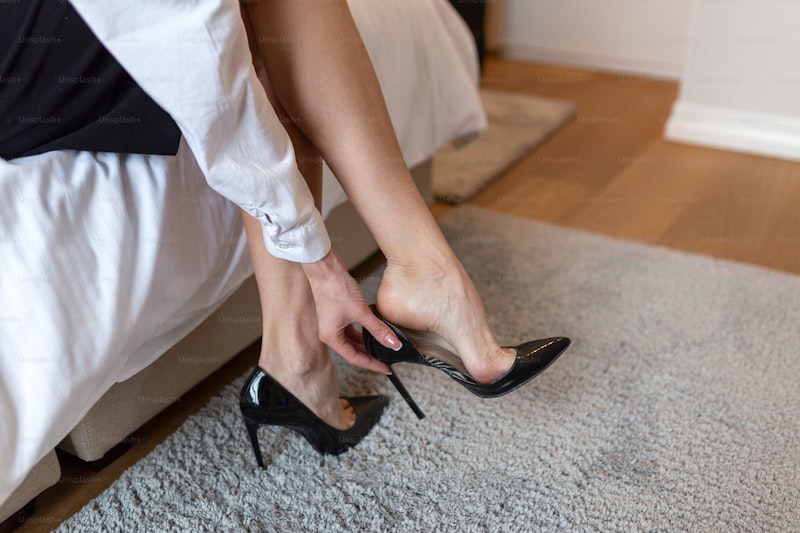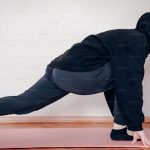Ankles are amazing things – they (literally) hold us up and propel us around. They absorb HUGE amounts of impact when we run and jump. And yet we rarely pay them any attention. Unless they are a problem, of course, then they can cause pain and suffering. Let me introduce you to the incredible world of ankles and how to get the most from them on your yoga mat.
Supporting Anatomy
The ankle joint is where the leg meets the foot. It is made up of 3 bones creating 2 joints – the talocrural and inferior tibia-fibular joints. Let’s look at the inferior tibia-fibular joint first – this is lower (hence inferior) of the 2 joints between the tibia and fibula in the lower leg. It is a synovial hinge joint and basically moves in 2 directions. Those are – dorsiflexion (toes pulled up towards knee) and plantarflexion (toes pointed like a ballerina).
The inferior tibiofibular joint is a fibrous joint between the tibia and fibula just above the talocrural joint. It is a very stable joint with hardly any movement even on high loading and it is incredibly important for ankle stability.
The other movements of pronation and supination (turning the foot in and out) come from all of the other joints that make up the hindfoot (talus and calcaneus) and midfoot (navicular, cuboid and 3 cuneiform bones). There is SO much going on in this area that there is a separate article on The Arches of the Foot but before I get carried away into the wonders of the foot – back to the ankle!
Marvelous Muscles
When you look at a picture showing the anatomy of the ankle it can look really complicated with tendons pretty much on every side like a corset of spaghetti. But the good news is the only four of them actually move the hinge of the ankle – the rest are moving the joints of the foot so we can ignore them for now.
I’d like to look at Tibialis Anterior first – this muscle is found in the lower leg, it is part of the muscle bulk on the outer part of the shin. It becomes tendon above the ankle and then passes across the ankle to attach to the bones on the inside of the arch of the foot. One of its jobs is to pull the toes up towards the knee into dorsiflexion – we use it in sitting poses like dandāsana (staff pose) and paschimottanāsana (seated forward fold) and you can often see the big, chunky tendon standing out at the ankle when you do this.
There is also a Tibialis Posterior muscle that moves the ankle joint. It is the muscle in the calf which also becomes tendon above the ankle. The tendon passes around the inside of the ankle joint to attach to the inside arch of the foot really near to Tibialis Anterior. One of its many jobs is to assist in plantar flexing the ankle (pointing toes) like in salamba sarvangāsana (shoulderstand).
The real stars of the show as far as ankle muscles are concerned are the gastrocnemius and soleus muscles that make up the bulk of the calf. These muscles join together in the lower calf and attach to the back of the calcaneus via the Achilles tendon. These muscles are the main ones that plantarflex the ankle and have a massive role in generating and absorbing the forces when we walk, run and jump.
Super Statistics
Did you know that when we walk 1.5 times our body weight goes through our ankle joint with every step. It increases to 3-4 times bodyweight on running; up to 10 times bodyweight on jumping and can be as high as 18 times body weight when somersaulting. Wow!
In contrast, yoga puts hardly any impact force through the joint and only gets up to 1 x bodyweight on single leg balances. This means that yoga is a safe and comfortable activity for people with ankle problems aggravated by the impact. Result!
Putting it all into Practice
In many standing poses our ankle is in ‘mid-position’ which means neither plantarflexed nor dorsiflexed. This applies to the front ankle in virabhadrāsana (warrior) 1 & 2 if the knee is stacked over the ankle and the standing leg on virabhadrāsana 3.
In some standing poses an ankle can be plantarflexed – think the front leg of trikonāsana (triangle) and parsvottanāsana (pyramid pose). While in utkatāsana (chair pose) the ankle is dorsiflexed and, in fact, a stiff ankle that does not move far into dorsiflexion will limit how deeply a yogi can get into this pose. More of that later.
Another time where the ankle is working hard is in adho mukha śvānāsana (down dog). Here the ankles are moving into dorsiflexion and stretching the calf and Achilles tendon. One of the many benefits of this pose is the lengthening of the myofascial structures in the back of the body. And we can add value here by working Tibialis Anterior to actively dorsiflex the ankle at the same time as gravity is creating the stretch. This actually helps to release tension in the calf muscles through reciprocal inhibition and can help to deepen the pose.
Common Problems (and the Solutions)
Ankles, like all joints, come in all shapes and sizes with different abilities to move. And this is when they are fit and healthy with no problems or injuries! Some people have ankles that don’t point very far into plantar flexion. This means that balasana (child’s pose) and kneeling poses like virāsana (hero pose) are really uncomfortable as the ankles are forced beyond their normal range of movement. Placing a small rolled towel under the ankle for support can make this poses more comfortable and enjoyable.
Conversely, some people have ankles that do not dorsiflex far – this will limit poses like utkatāsana (chair pose) and malāsana (yogi squat) making them hard to do and uncomfortable. Placing both heels on a rolled yoga mat or small block will make a HUGE difference here – try it, you will be amazed!
Is it safe to do yoga when you have ankle sprains, Achilles problems, arthritis and after fractures? I hear you ask… Yes, yes and YES!!! Yoga is perfect for these times – simply apply the basic rule that nothing should be painful. If something hurts, modify the pose as we have above or do a different pose! There will always be other poses that are comfortable to do.
The bottom line is that our ankles are really quite simple things that do ALOT for us. Keeping them mobile and strong with yoga will reap benefits in terms of what they will do for your year, after year, after year. So, roll out that mat and give thanks for your ankles in all their glory, I say!













